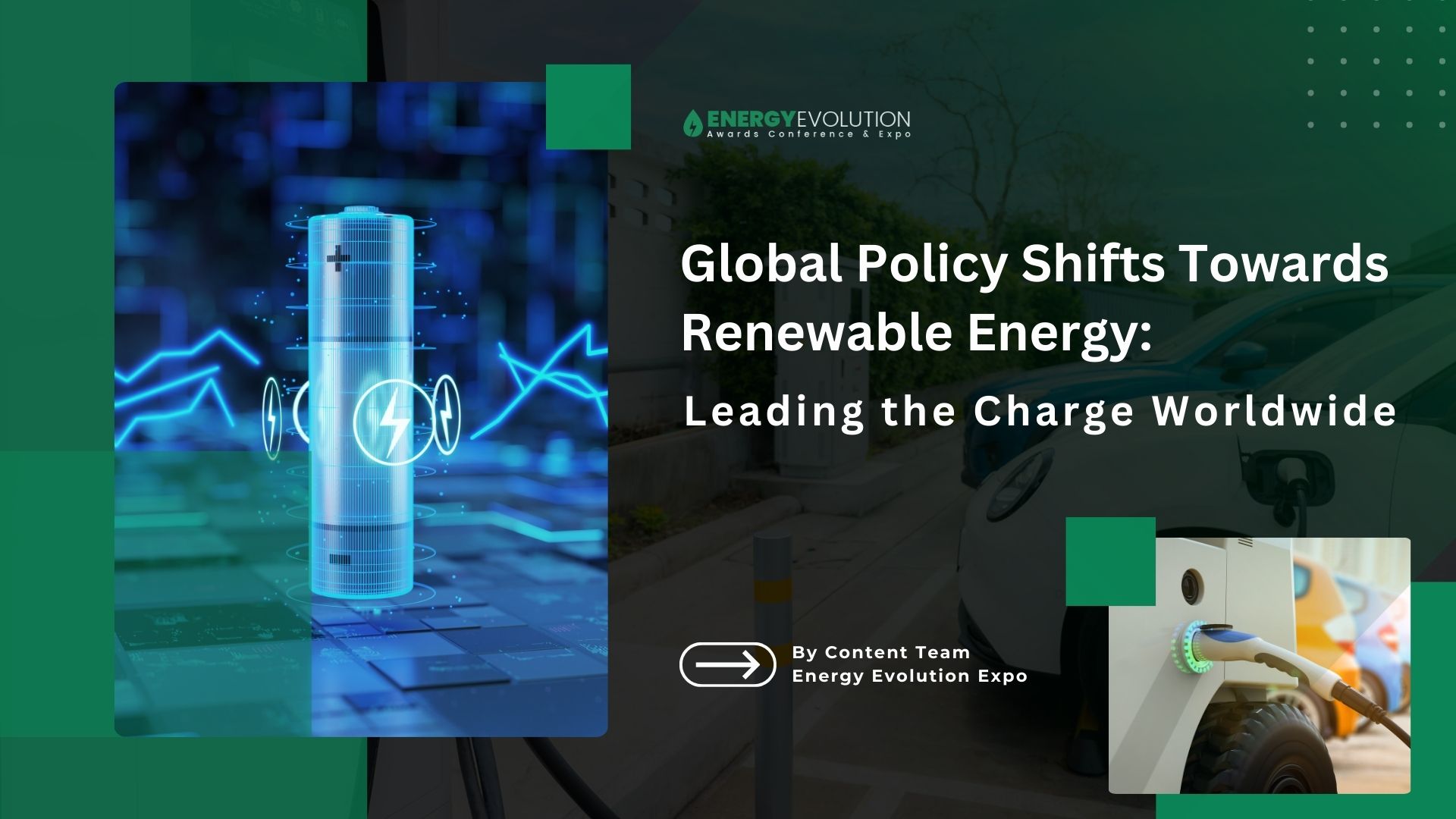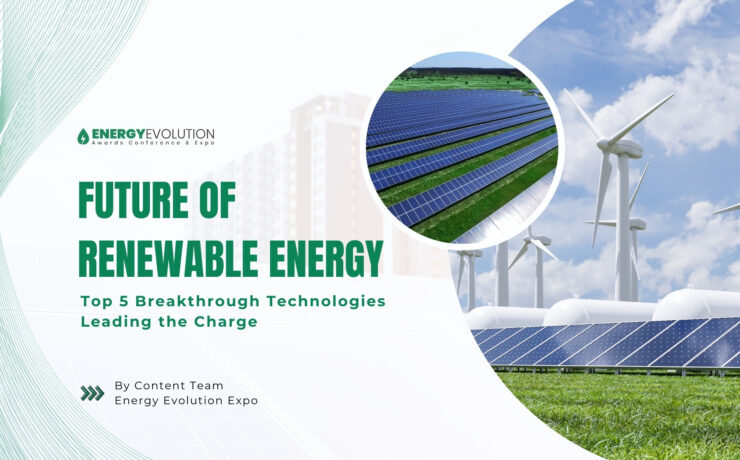Global Policy Shifts Towards Renewable Energy: Leading the Charge Worldwide

The transition to renewable energy is crucial in global efforts to combat climate change, necessitating significant policy shifts worldwide. Over the past few years, regions such as Europe, North America, Asia, and Africa have taken substantial strides, driven by the urgent need to reduce greenhouse gas emissions, mitigate the impacts of fossil fuel dependency, and ensure a sustainable energy future.
Europe has spearheaded these efforts with the European Green Deal, aiming for climate neutrality by 2050 through investments in renewable energy and phasing out coal. North America, particularly the United States and Canada, has introduced policies like tax incentives for solar and wind projects and funding for clean energy research, addressing the climate crisis while fostering economic growth.
Asia, led by China and India, has rapidly adopted renewable energy, with policies promoting solar and wind power to reduce air pollution and enhance energy security. In Africa, countries like Kenya and South Africa are leveraging renewable resources through policies that attract investments and diversify their energy mix.
These policy shifts are essential as they create a regulatory framework that encourages innovation, attracts investments, and sets clear targets for renewable energy adoption. They also address the externalities associated with fossil fuels, such as environmental degradation and health impacts, and promote the development of a resilient, low-carbon economy.
By examining these global policy developments, we can understand the critical role of strategic governance in facilitating the transition to renewable energy, ensuring a sustainable future, and addressing the pressing challenge of climate change. In this detailed blog, we’ll explore the latest policy developments globally, showcasing how various regions are leading the way in the adoption of renewable energy.
Adoption of Renewable Energy
1. The European Green Deal: A New Growth Strategy
The European Green Deal, introduced by the European Commission in December 2019, represents a groundbreaking strategy to transform Europe into the first climate-neutral continent by 2050. This ambitious initiative encompasses several key components:
– The European Climate Law, which enshrines the EU’s commitment to climate neutrality by 2050 into legally binding obligations.
– The 2030 Climate Target Plan, which aims to cut greenhouse gas emissions by at least 55% by 2030 compared to 1990 levels.
– The Circular Economy Action Plan, dedicated to minimizing waste and maximizing the reuse of resources within the economy.
– The Biodiversity Strategy for 2030, designed to restore biodiversity and safeguard natural habitats throughout Europe.
These comprehensive measures collectively form the backbone of the European Green Deal, driving forward an unprecedented shift towards sustainability and environmental stewardship.
2. The Fit for 55 Package
In July 2021, the European Commission introduced the Fit for 55 package, a comprehensive suite of proposals designed to align EU policies with the latest climate targets. Central to this package are several key initiatives:
– Revision of the Emissions Trading System (ETS): This revision expands the scope of the ETS to include additional sectors, such as maritime transport, and reduces the number of available allowances, thereby increasing the cost of carbon emissions and incentivizing reductions.
– Carbon Border Adjustment Mechanism (CBAM): This mechanism aims to curb carbon leakage by imposing tariffs on imports from countries with less rigorous climate regulations, ensuring that imported goods reflect the carbon costs borne by EU producers.
– Renewable Energy Directive (RED) Revision: This update raises the EU’s renewable energy production target to 40% by 2030, a significant increase from the previous goal of 32%, underscoring the EU’s commitment to accelerating the transition to clean energy.
These initiatives are integral to the Fit for 55 package, ensuring that EU policies are robustly aligned with the ambitious objective of reducing greenhouse gas emissions by 55% by 2030. By encompassing a broad range of sectors and introducing stringent measures, the package represents a pivotal step towards achieving climate neutrality and fostering sustainable growth within the EU.
3. The Inflation Reduction Act of 2022
The Inflation Reduction Act of 2022 represents a major commitment to clean energy, featuring substantial investments, tax credits for renewable energy projects, and incentives for electric vehicles. This comprehensive legislation is designed to enhance the U.S. energy landscape by encouraging the adoption of renewable energy sources and reducing carbon emissions.
4. Pan-Canadian Framework on Clean Growth and Climate Change
The *Pan-Canadian Framework on Clean Growth and Climate Change* is an extensive strategy aimed at tackling greenhouse gas emissions across Canada. This framework emphasizes a multi-faceted approach to fostering clean growth by investing significantly in innovative clean technologies that can drive economic progress while simultaneously reducing environmental impacts.
It outlines specific measures to transition to renewable energy sources, ensuring that Canada not only meets its climate commitments but also positions itself as a leader in the global shift toward sustainable energy solutions. Additionally, the framework supports various initiatives that encourage collaboration among federal, provincial, and territorial governments, as well as partnerships with Indigenous communities, businesses, and stakeholders.
By prioritizing sustainable practices, this comprehensive plan aims to create a resilient economy that benefits all Canadians while protecting the environment for future generations. The overarching goal is to mitigate climate change while fostering economic prosperity through a cleaner, greener energy landscape.
5. Clean Fuel Standard
The *Clean Fuel Standard* is an initiative introduced in Canada designed to lower greenhouse gas emissions associated with fuel use and encourage the adoption of renewable energy sources within the transportation sector. This regulatory framework establishes requirements for fuel suppliers to progressively reduce the carbon intensity of their products.
By incentivizing the use of cleaner fuels, the standard aims to accelerate the transition to a more sustainable energy system. This initiative not only seeks to mitigate climate change impacts but also fosters innovation in the development of renewable energy technologies, ultimately contributing to a cleaner and more efficient transportation landscape in Canada.
6. China’s 14th Five-Year Plan
China’s *14th Five-Year Plan* prioritizes the advancement of renewable energy sources, setting a target for 20% of the country’s energy consumption to be derived from non-fossil fuels by the year 2025. This strategic plan reflects China’s commitment to transitioning away from traditional fossil fuels and reducing greenhouse gas emissions in response to climate change.
By investing in renewable technologies such as solar, wind, and hydroelectric power, the plan aims to enhance energy security, promote sustainable economic growth, and align with international climate goals. This ambitious initiative signifies China’s intention to lead in global renewable energy efforts and create a greener future.
7. China’s Clean Fuel Standard
This is designed to lower greenhouse gas emissions associated with fuel consumption and to encourage the integration of renewable energy sources within the transportation sector. This regulatory initiative sets specific guidelines for fuel suppliers to reduce the carbon intensity of their products, promoting cleaner alternatives and innovative energy solutions.
By fostering the use of renewable fuels, the standard aims to enhance environmental sustainability while supporting China’s broader goals of reducing air pollution and combating climate change. Ultimately, this initiative is a critical step towards creating a more sustainable and efficient transportation system in China.
8. India’s National Solar Mission
It is an ambitious initiative aimed at achieving 100 gigawatts (GW) of solar power capacity by 2022. This mission not only focuses on expanding solar energy generation but also sets challenging targets for wind energy and other renewable sources, reflecting India’s commitment to diversifying its energy portfolio.
By investing in renewable technologies, the mission seeks to enhance energy security, reduce reliance on fossil fuels, and combat climate change. The National Solar Mission serves as a pivotal component of India’s broader strategy to promote sustainable development and contribute to global efforts in achieving a cleaner energy future.
9. India’s National Action Plan on Climate Change (NAPCC)
This encompasses a range of initiatives aimed at promoting renewable energy and enhancing energy efficiency across the country. This comprehensive plan outlines specific missions targeting various sectors, including solar energy, wind power, and sustainable agriculture, all designed to mitigate climate change impacts.
By prioritizing clean energy solutions and energy-saving practices, the NAPCC seeks to reduce greenhouse gas emissions while fostering sustainable development. This strategic approach not only addresses environmental challenges but also aims to strengthen India’s energy security and stimulate economic growth through the adoption of innovative and efficient technologies.
10. Green Growth Strategy
Japan’s Green Growth Strategy is an ambitious framework that aims to achieve carbon neutrality by 2050. This initiative focuses on substantial investments in renewable technologies, particularly in hydrogen production and offshore wind energy, positioning Japan as a leader in the transition to a low-carbon economy.
By promoting research, development, and deployment of these clean technologies, the strategy seeks to create a sustainable energy landscape while driving economic growth and job creation. Additionally, it emphasizes collaboration between the government and private sectors to foster innovation and ensure a comprehensive approach to addressing climate change challenges.
11. Feed-in Tariff Scheme
Japan’s Feed-in Tariff Scheme is designed to promote the growth of renewable energy by providing fixed payments to producers of solar, wind, and other renewable sources. This policy creates a stable financial incentive for investors, encouraging the development of renewable energy projects across the country.
By guaranteeing a set price for energy produced from these sources, the scheme has successfully attracted investment and stimulated growth in the renewable sector. This initiative not only helps to diversify Japan’s energy mix but also supports the country’s long-term goals of reducing greenhouse gas emissions and enhancing energy security.
12. Integrated Resource Plan (IRP)
South Africa’s Integrated Resource Plan (IRP) is a strategic framework aimed at transforming the country’s electricity generation mix by increasing the share of renewable energy sources. This plan outlines specific targets for wind, solar, and hydroelectric power, reflecting South Africa’s commitment to a more sustainable energy future.
By diversifying its energy portfolio, the IRP seeks to reduce dependence on fossil fuels and lower greenhouse gas emissions. The plan emphasizes the importance of integrating renewable technologies into the national grid while ensuring energy security and reliability, ultimately contributing to a cleaner and more resilient energy system.
13. Renewable Energy Independent Power Producer Procurement Program (REIPPPP)
The Renewable Energy Independent Power Producer Procurement Program (REIPPPP) is a key initiative in South Africa designed to stimulate private investment in renewable energy projects. By creating a competitive bidding process, the REIPPPP attracts independent power producers to contribute to the country’s renewable energy capacity.
This program has successfully facilitated the development of numerous solar, wind, and biomass projects, helping to diversify the energy mix and promote sustainable development. Through REIPPPP, South Africa aims to enhance energy security, create jobs, and reduce carbon emissions while supporting the transition to a greener economy.
14. Least Cost Power Development Plan (LCPDP) in Kenya
http://kerea.org/wp-content/uploads/2016/08/Least-Cost-Power-Development-Plan-2011-2031.pdf
The Least Cost Power Development Plan (LCPDP) in Kenya aims to address the nation’s increasing energy needs by prioritizing the expansion of renewable energy sources such as geothermal, wind, and solar power. This strategic initiative is designed to provide a sustainable and cost-effective solution to meet the growing electricity demand.
By focusing on these clean energy sources, the LCPDP seeks to reduce reliance on fossil fuels, lower greenhouse gas emissions, and enhance energy security. The plan also envisions infrastructural improvements and investments that will support the integration of renewable energy into the national grid.
15. Feed-in Tariff Policy in Kenya
Kenya’s Feed-in Tariff (FiT) Policy is designed to promote the development of small-scale renewable energy projects by offering fixed payments to producers for the electricity they generate and supply to the grid. This policy incentivizes investments in renewable energy technologies such as solar, wind, hydro, and biomass.
By guaranteeing a stable and predictable revenue stream, the FiT policy aims to attract both local and international investors, stimulate economic growth, and increase the share of renewable energy in Kenya’s overall energy mix. The policy supports the country’s transition to a more sustainable and environmentally friendly energy system.
16. National Energy Strategy in Morocco
Morocco’s National Energy Strategy sets an ambitious goal to generate 52% of its electricity from renewable sources by 2030. This strategy involves substantial investments in solar and wind energy projects to diversify the country’s energy mix and reduce dependence on fossil fuels.
The plan focuses on leveraging Morocco’s abundant natural resources to enhance energy security, stimulate economic development, and mitigate climate change impacts. By promoting sustainable energy practices, the strategy aims to position Morocco as a leader in renewable energy adoption in the region and contribute to global efforts in transitioning to clean energy.
17. Noor Solar Program in Morocco
The Noor Solar Program in Morocco is one of the largest concentrated solar power plants in the world, located in the Sahara Desert. This pioneering project utilizes cutting-edge solar technology to harness the intense sunlight of the region, producing substantial amounts of renewable energy.
The Noor complex is a key component of Morocco’s broader efforts to increase its renewable energy capacity and reduce carbon emissions. By generating clean electricity on a large scale, the program not only supports the country’s energy needs but also demonstrates Morocco’s commitment to sustainable development and innovation in the renewable energy sector.
The future of renewable energy appears highly promising, propelled by ongoing policy support and technological advancements. Nations across the globe are steadfast in their commitment to ambitious climate goals and innovative solutions, positioning themselves as leaders in the renewable energy movement. The global shift towards renewable energy policies marks a critical step in combating climate change.
Initiatives like the European Green Deal, alongside bold targets set by countries in Asia, North America, and Africa, are driving a significant transformation towards sustainable energy. As these policies are implemented and technology continues to advance, nations worldwide will play a key role in the renewable energy revolution. This shift sets the stage for a greener, more sustainable future, highlighting the collective effort to reduce carbon emissions and promote environmental stewardship.
The world is witnessing an era of change where renewable energy is at the forefront, fostering economic growth and energy security while protecting the planet for future generations. We need to keep up with all recent innovations to reap maximum benefits and to facilitate a better understanding of the latest developments and trends in the Renewable energy Industry, various Conferences and Expos, which bring Industry leaders together, serve as an all-inclusive platform.
The Energy Evolution Awards, Conference, and Expo organized by Next Business Media is making its debut in Spain in 2025. It will be a leading forum dedicated to honoring excellence in Energy Technology, showcasing innovations, and fostering collaborations. The events unite industry leaders, and visionaries to explore the latest advancements, tackle key challenges, and shape the future of Energy.
The Energy Evolution Awards, Conference, and Expo will celebrate outstanding achievements, promote sustainable practices, and drive the Energy Industry forward into a technologically advanced sustainable era. Energy Evolution Awards, Conference, and Expo will be a platform for cultivating innovation and shaping a brighter, more efficient energy landscape..






